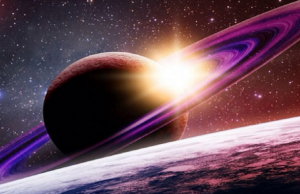
21st Century Wire says…
According to reports, newly discovered subsurface ocean on one of Saturn’s moons has raised hopes of finding alien life.
The subsurface lake appears to be made up of a similar composition to salt-water lakes that are found here on Earth.
The Moon, Enceladus, was investigated in a recently published paper that found the water to have the same pH levels ‘found in ammonia-based glass-cleaning solutions’, however ‘some organisms on Earth are still capable of living in such conditions’. The high salt concentrations are similar to California’s Mono Lake.
Moreover, ‘active hydrothermal vents are likely to exist on the Enceladus ‘seafloor’, meaning the possibility for the existence of alien life, albeit microscopic, is definitely possible.
Earlier this year evidence of alien ‘seeding’ taking place on Earth was discovered by another team of scientists, and a 28 million year old ‘human’ was found in Ethiopia.
What could be waiting to be discovered on Saturn’s Moon? Let us know in the comments…
Follow us here: http://twitter.com/21WIRE

Cradle of alien life? Ocean on Saturn moon resembles habitable lakes on Earth
The newly-discovered subsurface ocean on Saturn’s icy moon of Enceladus is similar in makeup to some of the life-bearing salt lakes on Earth, a new US study suggested.
Astrobiologists believe this small moon is the best place to search for alien life in the Solar System.
The 505-kilometer-wide satellite is geologically active, with powerful geysers blasting through its ice shell.
Those geysers contain water which researchers suggest comes from an ocean located beneath the moon’s icy surface.
A new paper entitled ‘The pH of Enceladus,’ published on Wednesday in the journal Geochimica et Cosmochimica Acta, looks into the chemical reactions that occur as Enceladus’ ocean water comes into contact with its rocky mantle.
The authors based their research on data gathered by NASA’s Cassini spacecraft, which has been orbiting Saturn since 2004.
They used mass-spectrometry measurements of the gases and ice grains in Enceladus’ plume to develop a model that estimates the saltiness and pH of the water in the moon’s inner ocean…
Continue reading the full story on RT
READ MORE ANCIENT HISTORY AT: 21st Century Wire Ancient History Files















